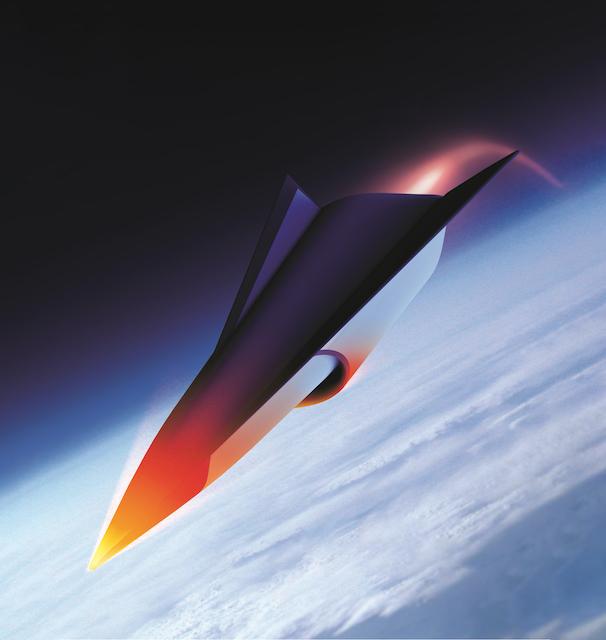This article is published in Aerospace Daily & Defense Report, part of Aviation Week Intelligence Network (AWIN), and is complimentary through Jan 09, 2024. For information on becoming an AWIN Member to access more content like this, click here.

A future hypersonic vehicle could be powered by GE's proposed turbine-based combined cycle propulsion system, featuring a high-Mach turbofan, a rotating detonation combustor and a dual-mode ramjet.
NISKAYUNA, New York—General Electric says it has demonstrated a sustained rotating combustion process in a supersonic air flow through a dual-mode ramjet during a ground rig test for the first time.
The feat clears a key technical hurdle in a three-year campaign to prove the feasibility of a turbine-based combined cycle (TBCC) propulsion system for a future military hypersonic vehicle.
The Nov. 16 demonstration at the GE Global Research Center here moves the company closer to a full-scale ground test in late 2025 of a high-Mach number derivative of a turbine engine sized in roughly the F110 turbofan-class, which would be paired with a rotating detonation dual-mode ramjet (RD-DMRJ) in a TBCC system.
GE officials says the unique configuration of a rotating detonation combustor in a hypersonic, air-breathing propulsion system should yield several benefits.
Most importantly, the higher energy release from detonating—rather than burning—fuel during combustion is expected to lower the required Mach number of the cutover speed between the turbofan and the ramjet in a TBCC configuration.
By lowering the Mach number for activating the ramjet, GE can use a higher-speed derivative of a Mach 2.5-class supersonic turbofan, rather than a more exotic turboramjet capable of top speeds around or above Mach 4.
The lowest ignition speed of a state-of-the-art DMRJ capable of hypersonic flight beyond Mach 6 is between Mach 3.2 and 3.7, said Craig Young, GE’s director of hypersonic propulsion. It is possible to achieve ignition in a ramjet at a lower Mach number using standard deflagration combustion, but that comes with a high risk of losing thrust from the ramjet instead of gaining it, he added.
The fuel detonation approach also is expected to reduce the size of the overall RD-DMRJ module of the TBCC compared to deflagration combustion, said Mark Rettig, GE’s general manager of new and derivative products for military systems.
GE researchers confirmed the feasibility of the RD-DMRJ in a proof-of-concept rig test on a subscale system last month. The test produced the world’s first known combustion from sustained rotating detonation waves in a supersonic flow within a Mach 6-capable DMRJ system.
The next step is to demonstrate a full-scale DMRJ in a ground laboratory. A new DMRJ sized for an F110-thrust-level TBCC architecture is almost ready for testing. A team of researchers at GE Aerospace, GE’s Edison Works experimental unit and GE’s recently acquired hypersonic propulsion company Innoveering designed the engine, joining an elite club of DMRJ producers in the defense industry, which is now limited to Northrop Grumman and L3Harris-owned Aerojet Rocketdyne.
The system is scheduled to enter testing in the third quarter of next year, but it could occur early next year as currently the team is running months ahead of schedule, Rettig said.
By the end of 2024 or early 2025, the DMRJ is scheduled to be integrated with a full-scale rotation detonation combustor for another ground rig test, Rettig added. Finally, a the RD-DMRJ will be combined with a high-mach turbine engine for a ground rig test of a hypersonic TBCC system by the end of 2025.
So far, GE has not confirmed a specific path to continuing beyond rig testing. A flightworthy version of the engine for a testbed hypersonic vehicle would be necessary. The Air Force Research Laboratory’s secretive Mayhem program for testing reusable, air-breathing hypersonic propulsion would be a “good fit” for GE’s TBCC approach, Rettig said. A follow-on operational application for the TBCC system also is unclear, but is still a distant goal for the technology.





